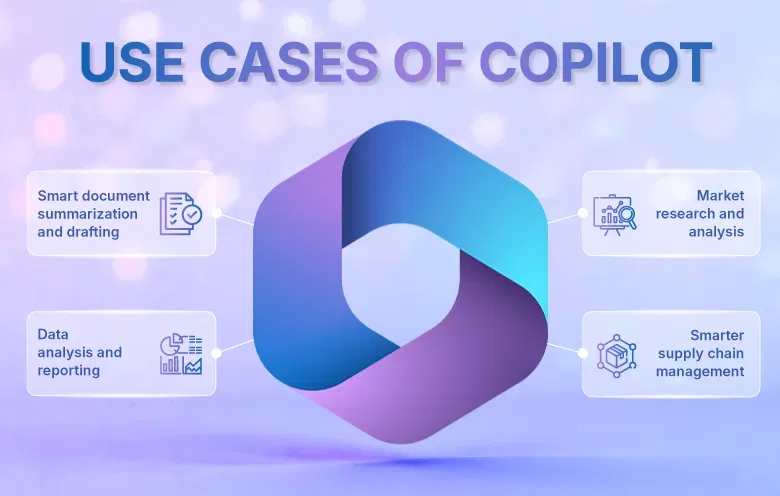In a world where technology evolves at lightning speed, businesses must stay nimble and adaptive to stay ahead of the curve. Yet, surprisingly, many enterprises still struggle with outdated legacy systems. These relics of the past not only obstruct growth and innovation but also act as a barrier to seamless collaboration in an increasingly interconnected world.
A staggering 79% of organizations report legacy apps hinder digital transformation. – A survey by 2nd Watch
The current scenario is evolving, and there is a growing need to adopt contemporary cloud-based solutions. It is increasingly clear that maintaining outdated infrastructures is not only expensive but also hampers the allocation of resources towards innovation and growth. Hence, it is crucial to transition your legacy systems to advanced, cloud-based alternatives such as Microsoft 365 (Office 365).
In this blog post, we aim to highlight the advantages that come with migrating from outdated legacy systems to Microsoft 365, an impressive collection of cloud-based solutions. By choosing to migrate, businesses can successfully perform tenant-to-tenant migration, streamline operations, foster effective collaboration, and ultimately thrive in the digital era.
Why businesses should consider migrating from legacy systems
Migrating from outdated technology to Microsoft 365 can help businesses overcome various challenges associated with legacy systems, such as
- Limited functionality
- Lack of support
- Compatibility issues
- Security vulnerabilities
- High maintenance costs
These hurdles can impede a company’s ability to adapt and expand.
However, by adopting cloud-based Microsoft 365 solutions, businesses can access a wide array of contemporary features that enhance agility, scalability, and flexibility. These solutions provide a robust foundation for real-time collaboration, seamless integration, streamlined operations, automatic updates, increased productivity and the ability to stay competitive in a rapidly evolving market.
Moreover, as technology advances at a rapid pace, it is crucial for businesses to move away from obsolete legacy systems and switch to modern cloud-based solutions like Microsoft 365 to capitalize its advantages.
Suggested: Level Up Your Business with Microsoft 365 Cloud Solutions or Get Left Behind!
What are the benefits of legacy system migration to Microsoft 365
Streamlined collaboration and productivity:
Migrating to Microsoft 365 provides organizations with a unified platform, breaking down communication barriers and streamlining collaboration. With familiar tools such as Microsoft Teams, SharePoint, and OneDrive, employees can work seamlessly across departments and locations. This leads to increased productivity and efficiency.
Enhanced data security and compliance:
Microsoft 365 (Office 365) offers robust security features and compliance tools that protect sensitive data and ensure adherence to regulatory requirements. By centralizing data governance through tenant-to-tenant migration, businesses can implement consistent security policies and maintain control over critical information.
Cost savings and simplified IT management:
Moving from on-premises legacy systems to Microsoft 365’s cloud-based infrastructure can save substantial costs. Hardware maintenance elimination and reduced IT management overhead allow IT teams to focus on strategic initiatives rather than routine maintenance tasks.
Access to advanced analytics and business insights:
Microsoft 365’s integrated tools, such as Power BI, MS Fabric and Microsoft 365 Analytics, provide powerful data visualization and analysis capabilities. These tools enable organizations to gain artificial intelligence (AI)-powered valuable insights from their data, empowering data-driven decision making across all levels of the business.
Seamless mobile and remote work enablement:
In today’s mobile workforce landscape, Microsoft 365 facilitates seamless access to documents and applications from anywhere, at any time, on various devices. This empowers employees to remain productive even while working remotely, contributing to a more agile and flexible organization.
Suggested: How Microsoft 365 enhances remote and hybrid work
Continuous updates and innovation:
With Microsoft 365, businesses automatically receive the latest updates and feature enhancements, ensuring access to cutting-edge tools and technologies without additional costs or downtime. This continuous innovation keeps organizations at the forefront of digital transformation.
Consolidated and cohesive work environment:
Tenant-to-tenant migration enables businesses to merge multiple Microsoft 365 tenants into a single cohesive environment. This integration fosters better cross-team collaboration, standardizes workflows, and simplifies management, resulting in an optimized and unified work ecosystem.
Incorporating Microsoft Viva and Fabric:
By adopting Microsoft 365, organizations can leverage the capabilities of Microsoft Viva and Fabric. Microsoft Viva is a platform that enhances employee engagement, well-being and productivity. It seamlessly integrates with Microsoft Teams, enabling easy access to learning materials, employee data and communication channels. Meanwhile, Microsoft Fabric aims to integrate different components of data analytics, such as computing, storage, analytics stack, governance, and business models, into a unified and seamless solution with Fabric.
With these remarkable benefits awaiting, it becomes imperative for businesses to embark on a well-structured approach to successfully transition into the realm of Microsoft 365.
Unlocking efficiency: Microsoft Power Platform governance and best practice | LinkedIn
Join us for a thought-provoking audio event dedicated to helping businesses streamline their Microsoft Power Platform usage. In today’s dynamic landscape, organizations grapple with issues such as;
How to strategize a successful M365 migration process
Conduct a comprehensive audit:
- Perform a thorough audit of existing systems, applications, and data to understand the organization’s specific needs and objectives.
- Identify potential challenges and opportunities for improvement that can be addressed during the migration.
Formulate a detailed migration plan:
- Create a comprehensive migration plan that includes a step-by-step roadmap, well-defined timelines and resource allocation.
- Develop contingency measures to tackle any unexpected issues that may arise during the migration process.
Involve key stakeholders:
- Engage decision-makers and key stakeholders throughout the planning and execution stages.
- Seek their support and alignment to ensure the migration’s success and secure the necessary resources for a smooth transition.
Effective communication and training:
- Communicate the benefits of Microsoft 365 to all employees, highlighting how it will improve their productivity and collaboration.
- Provide comprehensive training sessions or hands-on workshops to equip the workforce with the knowledge and skills needed to use Microsoft 365 effectively using Viva app.
Data migration and application integration:
- Work closely with the IT team or a trusted technology partner to execute data migration from legacy systems to Microsoft 365.
- Ensure seamless integration of critical applications and services into the new environment.
User provisioning and testing:
- Set up user accounts and provision access rights to relevant Microsoft 365 services based on employees’ roles and responsibilities.
- Conduct rigorous testing and monitoring during the implementation phase to identify and resolve any compatibility issues.
User adoption and change management:
- Prioritize user adoption and change management strategies to ensure employees adopt the new platform.
- Promote the benefits of Microsoft 365 and address any concerns or resistance through open communication and support.
Regular monitoring and evaluation:
- Monitor the migration’s success post-implementation to gauge its impact on productivity, collaboration, and security.
- Evaluate user feedback and identify areas for improvement to ensure the long-term success of Microsoft 365.
Continuous improvement and innovation:
- Encourage ongoing learning and exploration of Microsoft 365’s features and capabilities to maximize its potential.
- Stay updated with the latest enhancements and updates from Microsoft to continuously improve your organization’s productivity and efficiency.
By following this detailed strategizing exercise, businesses can ensure a successful and smooth migration to Microsoft 365. Through meticulous planning, effective communication, and prioritizing user adoption, organizations can harness the full potential of modern cloud-based solutions, driving growth, collaboration, and enhanced security in today’s competitive landscape.
Take a leap towards digital transformation!
Legacy system migration to Microsoft 365 is a strategic move that empowers businesses to deploy modern cloud-based solutions. By overcoming the challenges of legacy systems businesses can leverage the benefits of cloud migration, enhance productivity, streamline operations and position themselves for long-term success in the digital age. If you are looking for a Microsoft partner to careful plan, implement and map out user adoption strategies when transitioning to Microsoft 365, then talk to our MS experts.



